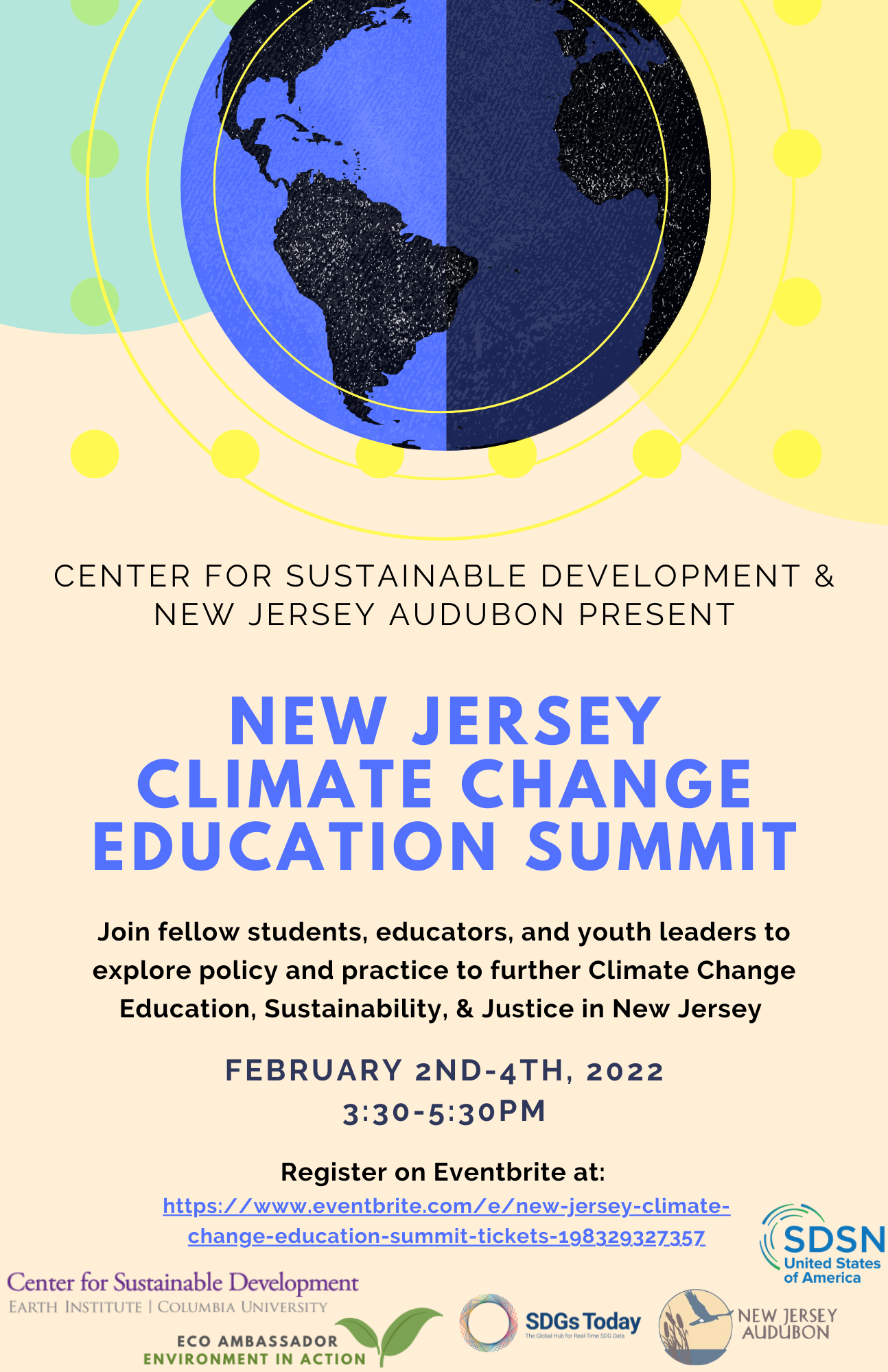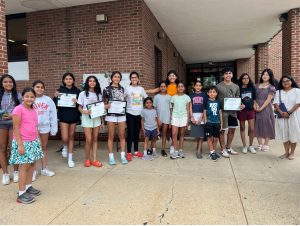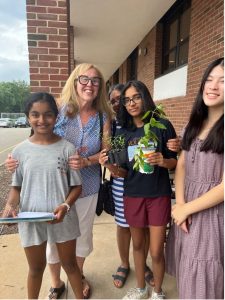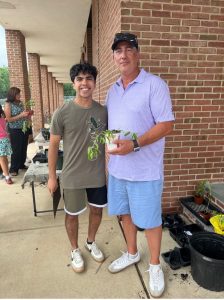Updated: Feb 3, 2022

Let us come together to discuss sustainability and justice as key components of New Jersey’s Climate Education policy. The Center for Sustainable Development at the Earth Institute, Columbia University will be hosting this event. This will be the 2nd annual Climate Change Education Summit to discuss policy and practice to further Climate Change Education in New Jersey.
Partners to the event include:
New Jersey Audubon
Biotrail New Yorks
UN Sustainable Solutions Network SDGs Today
UN Sustainable Solutions Network USA
The Summit will include free workshops led by youth activists, educators, education and sustainability policy experts to further participants’ skills on climate storytelling, community organizing and thinking about ways to integrate learning and action toward sustainability and justice in schools and communities.
2-4th February 3:30 to 6:30pm.
2nd Feb 2022
3:30pm -3:45pm
Keynote: First Lady of New Jersey Tammy Murphy
Introduction: Radhika Iyengar
3:45 – 4:30pm
Topic: Status of Climate Education in NJ: A Policy Dialogue
Marc Rogoff, Lead Environmental Education Specialist at the New Jersey department for Environmental Protection
John Henry, Senior Manager, STEAM & Sustainable Schools
Audience: Teachers and School Administrators
4:30pm-5:30pm
Topic: Understanding NJ’s Climate Resilience and Local Action
Moderation: Jazmin Mora
4:30 to 5:00pm-Localization of SDGs in education and local community action
Alainna Lynch on NJ SDG Index and discussion of local action, SDGs, USA a part of SDSN
5:00-5:30pm
Randall Solomon on The role of municipalities and schools in making Jersey Sustainable
The New Jersey Sustainable State of the State that tracks our progress toward a sustainable future.
Audience: Teachers and School Administrators
5:30pm-6:30pm
Global Stories and Local Action
Maryam Rabiee, UNSDSN SDGS Today On the Power of Storymaps
William Bertolloti and his students from Plainedge High School, New York.
Panel Moderation: Radhika Iyengar
Audience: Teachers and Students
3rd Feb 2022
3:30pm-4:30pm
Introduction: By Allison Mulch
Schools and Climate Action:
ANJEE- Mike Chodroff, Past President of ANJEE and Founder of the The Ripple Center
Frida Ruiz & Bianca Palomina – The Green Cause
Navyaa Jain – New Jersey Student Sustainability Coalition
Ben Rich – Science Educator at MKA & OASIS North Coordinato
Audience: Teachers and Students
4:30pm-5:30pm
Introduction: Jazmin Mora
Student Research on Climate Education
4:30 to 5pm: Carolyn McGrath and her students from Hopewell Valley Central High School.
Nadia Chasalow and Akhansha Arvind, seniors at Hopewell Valley Central High School and leaders of the HVCHS Youth Environmental Society, will present about biomimicry and ways to incorporate it in classroom and extracurricular activities. They will also discuss their experiences participating in the 2020 Biomimicry
Youth Design Challenge and running virtual workshops for participants around the world.
Tabitha and Lilian are two high school students and authors of the Sustainable Fashion newsletter. Starting as just a simple Girl Scout project, Lilian and Tabitha decided to create a newsletter that spreads information on the importance of sustainability in clothing. Through their newsletter, their hope is to inspire others to be more thoughtful before purchasing and live a more sustainable lifestyle.
Audience: Teachers and Students
5:00 – 5:30 Betsy Freeman and her students
Introduction: Jazmin Mora
Collaborative Action to Curb Climate Change and Food Waste across Schools
And Insight into “Greenwashing”
Student Action Researchers will discuss their collective action in collaborating schools for UN SDG 13.3 Climate Action, 12.3 Responsible Consumption and Production, and 4.7 Quality Education. Their shared goal: to support international, national, and state goals to halve food waste and mitigate climate change – starting in their spheres of influence and control – the school cafeteria. The students are collaborating members of the Columbia University Center for Sustainable Development Eco Ambassador network, as well as leaders in developing intersectional alliances and action for the UN SDGs in their own schools and communities. Hailing from three states, these GIS storytellers will share their work from research to advocacy to mobilization to student-driven teaching, learning, action, and best practices.
The team is represented by:
Dr. Jonathan Hart | Superintendent of Schools for the Readington Township School District. Prior to coming to Readington, Dr. Hart served as the Director of Human Resources for the Marlboro Township School District. His previous experience also includes appointments as Acting Assistant Superintendent and Assistant Director of Special Services for the Flemington-Raritan School District. Dr. Hart is an Adjunct Instructor at The College of New Jersey. Dr. Hart and his wife, Kara, are the proud parents of two sons Luke and Logan.
Betsy Freeman | Readington Schools, Student EcoAmbassador Advisor, Teacher, Gift and Development and Enrichment, Student Action Research Coach, and District Coordinator of Green Initiatives and Sustainability. Betsy has a Masters from Columbia University Teachers College, and EdD work in Educational Leadership and Management from Drexel University. Her focus is on student-driven inquiry and innovation, action research, and education for sustainability.
Readington Middle School Students:
- Callum Suggitt | EcoA Strategy Lead, Grade 7
- Marcos Hernandez | EcoA Operations Lead, Grade 7
- Noah Bielen | EcoA Field Research Lead, Grade 7
- Philip Kazantsev | EcoA Scientific Research Lead, Grade 8
School Partners:
- Sophia Berman | EcoA Youth Advisor, GIS StoryTeller, and Senior at Lower Moreland High School, Huntingdon Valley, PA
- Chris Serrao | EcoA Youth Advisor, GIS StoryTeller, and Sophomore at Phillips Exeter Academy, Exeter, NH
- Ashley Jun | Community EcoAmbassador, GIS Storyteller, and 8th grader at Millburn Middle School, Millburn, NJ
5:30-6:30pm
Introduction: Radhika Iyengar
Action Civics and Climate Education: Organizing for Community Change as Learning
Anjuli Ramos-Busot, Sierra Club, NJ
Emily Fano, National Wildlife Federation in New York City
Tara Stafford Ocansey, Executive Director, Children’s Environmental Literacy Foundation
Vicky Garufi, Director of Education, Children’s Environmental Literacy Foundation
Audience: Teachers and Community-based Organizations
4th Feb 2022
3:30pm-4:30pm
Connecting the New Jersey Climate Education Summit to the National Picture of Climate Education Policy
Frank Niepold
Climate Education Coordinator, Senior Climate Education Program Manager, Climate.gov Teaching Climate section lead Action for Climate Empowerment National Focal Point for the United States
Moderation by Aalok Bhatt and Radhika Iyengar
Audience: Teachers and School Administrators
4:00 to 4:30:
Radhika Iyengar, Curriculum and Resources for Integrating Climate Change Education & Global Citizenship Eco-ambassadors Program (3:30 to 4pm)
Audience: Teachers and School Administrators
4:30pm-5:30pm
Panel Moderation: Radhika
Moving forward with Justice and Sustainability
Panel discussion
Christina Kwauk, Education Consultant and Research Director at Unbounded Associates
Felisa Tibbits, UNESCO Chair in Human Rights and Higher Education and Chair in Human Rights Education at the Human Rights Centre of Utrecht University (Netherlands).
Audience: Teachers & Students
5:30 – 6:00
Introduction: Allison Mulch
Sustainability and Health Care
Elizabeth Cerceo, MD, Chair, Cooper Green Team: received approval to engage sustainability consultant to assess and plan Cooper’s sustainable future
Audience: Teachers & Students
6:00 to 6:30pm
Moving Ahead
Jeffrey Sachs, Professor Columbia University
Workshop: Moving forward jotting points from week
Audience: Students and teachers
Register here for the event
https://www.eventbrite.com/e/new-jersey-climate-change-education-summit-tickets-19832932












